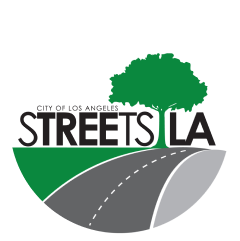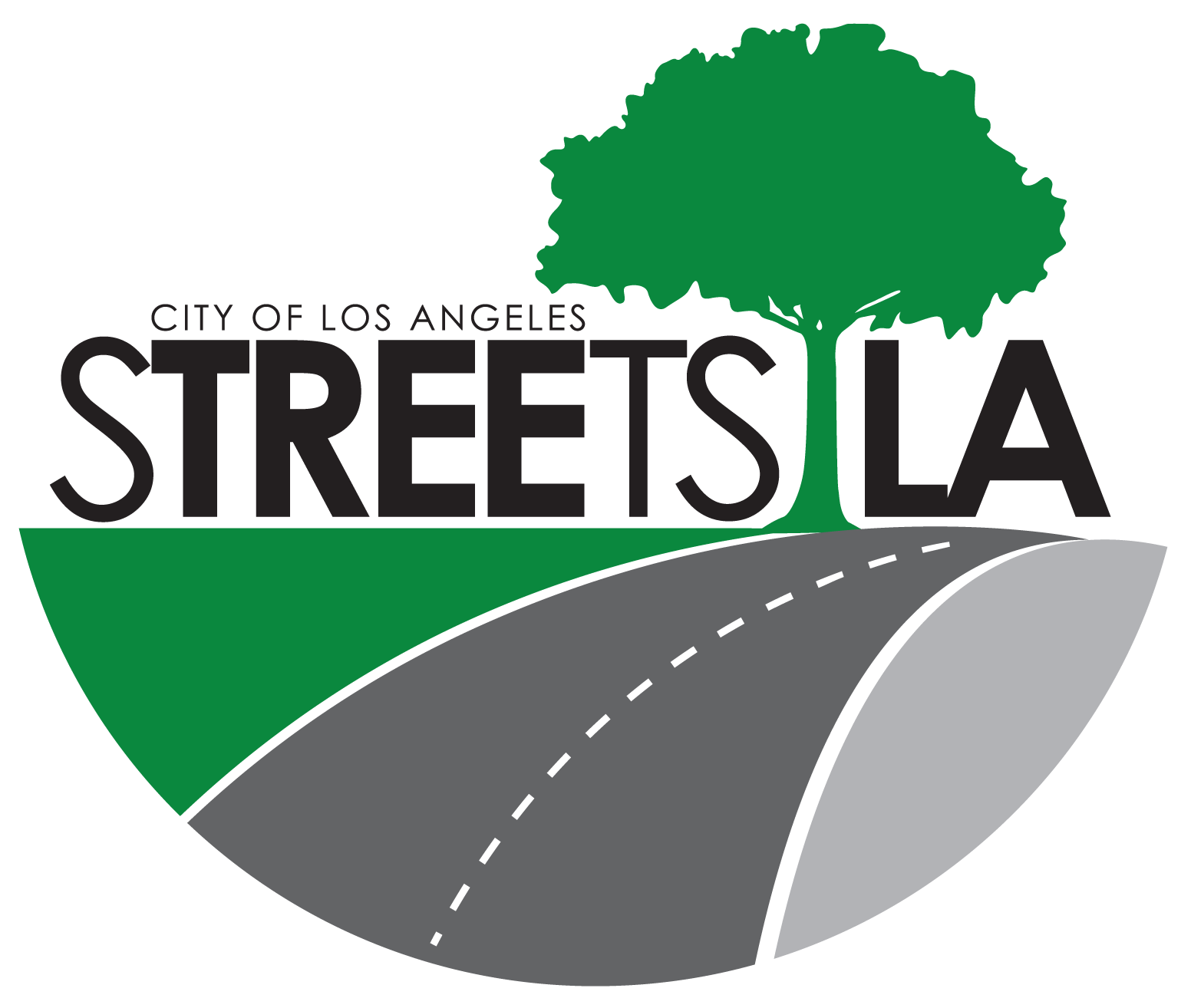The following questions are not all-inclusive. For more information regarding these questions or any other Urban Forestry related issues, you may contact the Urban Forestry Division directly at (213) 847-3077.
What is the Urban Forest? 
The Urban Forest is comprised of the trees and understory vegetation growing in an urban area and, perhaps most importantly, people. This includes privately maintained trees, publicly maintained trees, and naturally occurring vegetation, i.e., hillside chaparral, riparian areas.
How many trees are there in the Los Angeles Urban Forest? 
It has been estimated that there are over 10 million trees growing in the City of Los Angeles. Approximately 2 million trees are publicly maintained. Street trees are a highly visible component of the larger urban forest.
How large is the street tree population? 
There are nearly 700,000 street trees growing along 6,700 miles of streets comprised of nearly 1,000 different species. The City of Los Angeles street tree population contains the most species diversity and is one of the largest street tree populations in the world.
Who is responsible for managing the street trees? 
Since the 1932 Summer Olympic Games, the Department of Public Works, Bureau of Street Services, Urban Forestry Division, has been responsible for managing street tree pruning, dead tree and stump removal, tree planting, small tree maintenance, responding to tree-related public way emergencies, and maintaining landscaped median islands.
What are the Urban Forestry Division's responsibilities? 
The Division is responsible for the inspection of street trees, determining street tree species and locations, responding to public rights-of-way tree emergencies, street tree trimming when budgeted, determining street trees on development projects, oversight of street tree and median island maintenance contracts, and the enforcement of the City's protected tree code (Los Angeles Municipal Code (LAMC) Sec. 46).
How often does the city prune street trees? 
The current tree pruning cycle is approximately 15 years. City forces provide emergency services only. Programmatic tree pruning is performed by contractors and dependent upon the annual tree pruning budget provided.
Can I prune a street tree myself? 
Property owners may prune street trees at their own expense by obtaining a no-fee tree prune permit by calling the Bureau's Service Request line at (800) 996-2489. The permit will be provided within five working days.
How can a citizen request service? 
The most efficient way to request service is contact the Bureau's Service Request Section at (800) 996-2489. The City's one call center may be contacted by dialing 3-1-1. In most cases, the location will be inspected within 2 to 4 weeks depending on available staff and workload. However, if your request involves an emergency situation such as a tree or limb down or a partially uprooted tree, a crew will respond within 24 hours.
How soon will my request receive a response? 
Service requests regarding tree emergencies will be responded to within 24 hours during non-storm periods. During storm events, the response time may be longer depending upon request volume. Other requests for service will be responded to within two to four weeks.
What happens after a request is inspected? 
Division staff will contact the requester personally, leave a card or doorhanger, or phone to discuss the inspection outcome. For general tree pruning in which no specific problem is indicated, the Division sends a letter describing the City's current tree pruning policies. Tree pruning permits are sent via mail, fax, or email within five days of the request.
Does the city have tree pruning standards? 
Yes, the City has formally adopted, and enforces, the International Society of Arboriculture (ISA) Pruning Guidelines and the American National Standard Institute's Pruning Standards (ANSI 300).
Can I remove a street tree? 
Street tree removal requires a permit from the Division. Reasons for potential street tree removal include: damage to sidewalk/curb/driveway that cannot be repaired without tree removal, installation of driveway that cannot be relocated, and development public improvements conditions requiring street tree removal.
After tree pruning, what is done with the green waste? 
The Division currently recycles 100% of the greenwaste that is generated through routine maintenance. The mulch is then used for weed abatement and erosion control.
Who is responsible for the repair of the sidewalk? 
In accordance with the Los Angeles Municipal Code, the property owner is responsible for maintaining the sidewalk, curb, parkway, and driveway approach. The property owner may request a permit to trim the roots to allow for the repair of the sidewalk if the tree can be left in a safe condition which may also require pruning of the tree canopy to minimize wind resistance. The work is performed by the property owner at their expense. If the tree roots can not be safely pruned, the property owner may request a tree removal permit to remove the tree at their own expense and may be required to plant replacement trees.
What can the city do if my sidewalk is lifted due to tree roots but I cannot afford to replace the sidewalk? 
Contact the Bureau's Service Request Section at (800) 996-2489 and request a small asphalt repair (SAR) for an offgrade sidewalk condition.
Who is responsible for sewer damage caused by tree roots? 
The maintenance of sewer lines is the responsibility of the abutting property owner. This includes damage caused by tree roots.
Does the city perform root pruning of the parkway tree? 
The City does not perform root pruning. Property owners may perform the required root pruning at their own expense by obtaining a no-fee permit from the Bureau's Urban Forestry Division.
How many trees are planted each year in the city? 
Currently, City forces plant approximately 1,000 trees per year. City forces focus their tree planting primarily on replacement of existing trees that were previously removed. Non-profit groups such as the Los Angeles Conservation Corps (LACC), Tree People, North East Trees (NET), and others also plant many street trees as part of the Mayor's LA Green New Deal. Permission and oversight is provided by the Urban Forestry Division. About four thousand additional trees are planted on new subdivisions and developments under the direction and guidance of the Urban Forestry Division.
How many trees are removed each year? 
An average 2,000 trees are removed because they are dead, declining, structurally unsound, or storm damaged.
What is the process for getting a plant permit? 
If a group of residents or a homeowner's group desires to beautify their community, they can contact our Service Request Section and request a community planting packet from our Bureau. A coordinator with a neighborhood group or non-profit will evaluate the site, receive approval of the individual homeowners, and file the community planting permit. A Division arborist will work with the group to determine tree species and mark the curbs to indicate where the trees are to be planted. The community group and/or non-profit may then plant the trees. The homeowners are responsible for ensuring the trees receive adequate irrigation. Individuals may request a tree planting permit by contacting the Bureau's Service Request Section. The Division's goal is to issue the planting permit within 72 hours of receiving the request.
Can the property owner plant any tree they choose? 
The Division has developed a "Street Tree Selection Guide," which includes over 150 species. The guide was developed with the City's microclimates and soil conditions in mind. A resident or a homeowner's group can work with the Urban Forestry Division to choose the correct tree for their particular site. One of the most important parts of planting a tree is choosing the right tree for the right place. The list is not all-inclusive nor are all trees appropriate for a given site. Street tree species selection is made on a case-by-case basis.
Can a private citizen do improvements on their own on city maintained median islands? 
Yes. The "Adopt-a-Median" program allows individuals or groups to make improvements on a median island and also assume the maintenance of the median. For information regarding the "Adopt-a-Median" program, please contact the Division.
What is the relationship between street trees and bird species? 
Many bird species utilize trees as their home. Street trees are sometimes utilized by birds and particularly by smaller species. Large bird species, for instance hawks, falcons, and crows and migratory bird species are less likely to nest in street trees. The Urban Forestry Division trains its personnel to be aware of bird nests when entering trees prior to pruning. When active nests are found, pruning is not performed. The Division also discusses the Migratory Bird Act with its personnel during their annual training session.
Which species on private property are protected by the city per LAMC Sec. 46? 
Oak species (Quercus spp) native to Southern California, Southern California Black Walnut (Juglans californica), Western or California Sycamore (Platanus racemosa), and California Bay (Umbellularia californica), Mexican Elderberry (Sambucus mexicana), Toyon (Heteromeles arbutifolia)
How do I obtain a permit to remove a protected tree private property tree? 
If a protected tree removal permit is requested, please contact the Bureau's Service Request Section at (800) 996-CITY (2489) or dial 3-1-1. It is important to give complete information such as property owners name, agents name (if applicable), correct address of the tree(s) location, correct mailing address with zip code, and a daytime phone number (indicate if this is a work number). Service Request will provide you with an eight-digit Service Request (SR) number.
A Protected Tree Removal Permit application shall also be completed. You may contact the Division at (213) 847-3077 and an application with instructions shall be mailed or emailed to you. Please follow the tree removal permit guideline instructions when submitting the application. The SR number must be entered on the application for the Bureau to process your request.
Can the property owner plant any tree they choose? 
The Division has developed a "Street Tree Selection Guide," which includes over 150 species. The guide was developed with the City's microclimates and soil conditions in mind. A resident or a homeowner's group can work with the Urban Forestry Division to choose the correct tree for their particular site. One of the most important parts of planting a tree is choosing the right tree for the right place. The list is not all-inclusive nor are all trees appropriate for a given site. Street tree species selection is made on a case-by-case basis.
https://streetsla.lacity.org/sites/default/files/bss-udf_street_tree_sel...
How to care for Ivy and Climbing Vines around the tree trunk? 
The use of Ivy and other vine-like plants for ground cover in parkways adjacent to your property serves a useful aesthetic and soil erosion purpose. However, if permitted to grow uncontrolled, these plants may create two serious problems. Most of these plants tend to mat and result in unsafe walking conditions for pedestrians, especially those leaving parked vehicles. Secondly, the subject plants will eventually attach themselves to and grow up into parkway trees. The vines grow faster than trees and may overgrow and eventually suffocate the tree. For these reasons, the Division discourages the use of Ivy and vines as a public right-of-way (ROW) groundcover. When ivy and other vine-like plants are located in the public ROW, it is the adjacent property owner’s responsibility to ensure the plant does not hinder public egress and ingress through the parkway and to prohibit the vine from entering the street tree. This information sheet is provided as a public service. Hopefully, it answers the important questions regarding ivy and climbing vines. If you have any further questions, please refer to the Urban Forestry Division Inspector or contact the Division at (213) 847-3077. This and other information sheets may be obtained at the Urban Forestry Division office at 1149 S. Broadway, 4th Floor, Los Angeles, CA 90015.
![]()
![]()
![]()
![]()
![]()
![]()
![]()
![]()
![]()
![]()
![]()
![]()
![]()
![]()
![]()
![]()
![]()
![]()
![]()
![]()
![]()
![]()
![]()
![]()
![]()


